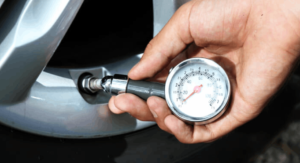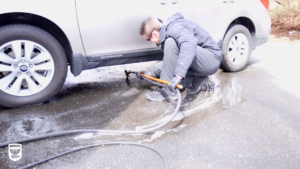When it comes to building a roll cage, one of the most important considerations is the size of the tube used. The right tube size ensures the safety and durability of the roll cage. In this guide, we will discuss the factors that determine the size of the tube and provide you with valuable insights on choosing the right size for your roll cage.

Credit: proformancemetals.co.uk
Factors to Consider When Choosing Tube Size
1. Material: The material used for the roll cage plays a crucial role in determining the tube size. Mild steel and chromoly are commonly used materials, each with different strength properties. Chromoly is stronger and lighter, allowing for the use of smaller tube sizes compared to mild steel.
2. Application: The intended application of the roll cage also impacts the choice of tube size. Roll cages used in racing cars require stricter regulations and may have specific tube size requirements determined by the racing authorities. Whereas, roll cages used in off-road vehicles may have different size considerations due to factors like weight and terrain.
3. Design: The design of the roll cage is another crucial factor. To ensure maximum strength and durability, tubes should be arranged to form triangles, which helps distribute the load along the intersection of the tubes. This design reduces the chances of bending or buckling during accidents or off-road impacts.
Tube Diameter and Thickness
The diameter and thickness of the tube are essential considerations in determining the size of the roll cage. Here are some general guidelines:
| Tube Diameter | Tube Thickness | Application |
|---|---|---|
| 1.50 inches | 0.095 inches | Street-driven vehicles |
| 1.75 inches | 0.120 inches | Off-road vehicles, recreational use |
| 1.75 inches | 0.095 inches | Street-driven vehicles, lightweight applications |
| 2.00 inches | 0.120 inches | Off-road vehicles, racing cars |
Tube Material
There are two common materials used for roll cage construction:
- Mild Steel: This is a popular choice due to its affordability and ease of welding. It is suitable for roll cages used in street-driven vehicles or mild off-road applications.
- Chromoly: Chromoly offers higher strength and lighter weight compared to mild steel. It is a preferred choice for roll cages in racing cars and more extreme off-road applications. The reduced weight allows for the use of smaller tube sizes without compromising safety.
Regulations and Standards
If you are building a roll cage for professional racing purposes, it is essential to consult the regulations and standards set by the racing authorities. Each racing category or organization may have specific requirements regarding tube size, material, and design. Compliance with these regulations ensures the safety of the driver and the vehicle.

Credit: www.amazon.com
Consulting Experts
If you are unsure about the appropriate tube size for your roll cage, it is always recommended to consult with experts or professionals in the field. They can provide valuable guidance based on your specific requirements and help you choose the right tube size for optimal safety and performance.
In conclusion, choosing the right tube size for your roll cage is crucial for ensuring safety and durability. Factors such as material, application, and design should be considered to determine the appropriate tube diameter and thickness. Compliance with regulations and consulting experts can further enhance the quality of your roll cage construction.
Frequently Asked Questions Of What Size Tube For Roll Cage
What Tube To Use For A Roll Cage?
The recommended tube to use for a roll cage is mild steel tubing. It should be arranged in a triangular design to avoid bending and buckling. The diameter and thickness of the tube will depend on the specific requirements of the roll cage design.
For more information on roll cage sizes and materials, please refer to reputable sources such as MSA Bluebook Section K and engineering websites.
What Steel Should I Use To Build A Roll Cage?
For building a roll cage, it is recommended to use mild steel tubing. The shape of the tubing should be arranged to form triangles to avoid bending and buckling. The tube diameter and wall thickness should be in accordance with safety regulations and guidelines provided by organizations such as MSA.
Can You Use Schedule 40 Pipe For Roll Cage?
Yes, Schedule 40 pipe can be used for a roll cage. It is important to ensure that the pipe meets the necessary size, diameter, and thickness requirements for the specific roll cage design and intended use. The choice of pipe material should also be considered, with mild steel being a popular option for its strength and durability.
Ultimately, consulting with a professional or referring to specific guidelines and recommendations is advised for optimal safety and compliance.
Which Shape Of Pipe Will We Prefer For A Roll Cage?
For a roll cage, it is recommended to use pipes that are arranged in triangular shapes to prevent bending and buckling. Bent tubes are more prone to buckling compared to straight tubes. The shape of the pipe should be designed to form triangles, with the major loads applied at the intersection of tubes.
This design helps to distribute the load evenly and enhances the overall stability and strength of the roll cage.
Faq 1: What Type Of Steel Should I Use To Build A Roll Cage?
To ensure maximum safety and strength, it is recommended to use high-grade mild steel, such as DOM (Drawn Over Mandrel) or 4130 chromoly steel, for building a roll cage. These materials offer excellent structural integrity and durability.





